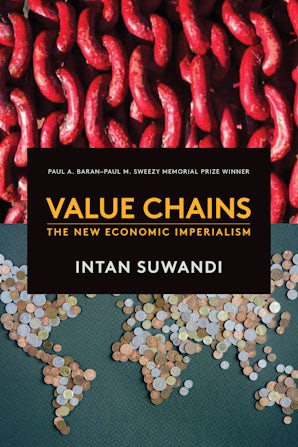Also in this issue
Books by Intan Suwandi
Value Chains
by Intan Suwandi
Article by Intan Suwandi
- COVID-19 and Catastrophe Capitalism: Commodity Chains and Ecological-Epidemiological-Economic Crises
- Labor-Value Commodity Chains: The Hidden Abode of Global Production
- Global Commodity Chains and the New Imperialism
- Multinational Corporations and the Globalization of Monopoly Capital: From the 1960s to the Present
- No Reconciliation without Truth: An Interview with Tan Swie Ling on the 1965 Mass Killings in Indonesia
- Behind the Veil of Globalization


